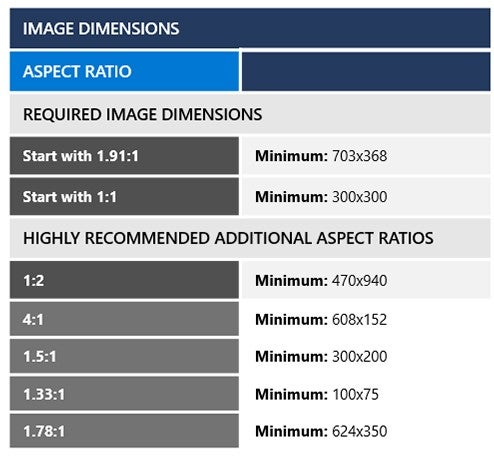Blog post
Introducing Microsoft Advertising’s Performance Max

Note: Performance Max is now globally available to all advertisers with no restrictions on enablement. Please see the March announcement for details.
Microsoft Advertising is committed to helping our clients leverage artificial intelligence (AI) in market-leading ways that save you time and build your business more effectively. As consumer journeys become even more dynamic and personalized, marketers will require more sophistication in our platform. This is why we’re introducing Performance Max, a new campaign type that perfects your creative and targeting combinations through automation.
Performance Max campaigns are designed to find and convert more customers across the entire network. We do this in real-time by pairing the right creative assets with the right targeting parameters and creating new combinations until we find the most high-performing ad for the market. You choose the strategy, input creative assets, and articulate your goals—Performance Max leverages Microsoft AI to do the rest.
This new campaign type is the next step as we support our clients in upleveling their marketing with predictive solutions and automated workflows. Performance Max (PMAX) is now available in open beta worldwide.
Key benefits of PMAX
Dynamically serve rich ads, everywhere
Based on your inputs, Microsoft will serve a variety of rich ads across Bing, AOL, Yahoo, MSN, Edge, Outlook, and more.
Find and attract your best audience
With the power of AI, your campaign intelligently serves the right ad creative to the right person.
Simplify your workflows
Automation frees up your time, while you receive campaign and asset-level reporting along the way.
What you’ll need to set up a PMAX campaign
Requirements
1. Conversion goals set up with the Universal Event Tracking (UET) tag and/or offline conversion tracking. If you use the Maximize Conversion Value bid strategy, revenue tracking must be enabled as well.
2. If you are setting up Product Ads, you’ll need to have a store within the Microsoft Merchant Center. This can be created directly in Microsoft Advertising online or imported from the Google Merchant Center. Once your store is set up, an active feed is also required.
Setting up your first campaign
Here are five steps to take as you architect your first PMAX campaign:
1. Conversion tracking
After setting up UET or offline conversion tracking, choose the goals that are most important to your business and assign appropriate values for your conversions.
2. Choose the right budget and bid strategy
Set your daily budget and then choose one of two bid strategy options:
a. Maximize conversion value: This strategy enables you to maximize the total value from the conversions you receive. Adding Target Return on Ad Spend (tROAS) is an additional layer of control you may add if you want to gain as much conversion value/revenue as possible while ensuring sufficient return over ad spend.
b. Maximize conversions: This strategy’s focus is on driving as many conversions as possible within your budget. Adding Target CPA (tCPA) is an additional layer of control you may add if you want to maximize conversions while maintaining desired cost per acquisition.
3. Final URL expansion
We recommend keeping this setting on to send traffic to the most relevant landing pages on your site based on the user’s search query and intent. This setting also generates additional assets to match your landing pages’ content.
4. Add assets
Add as many versions of high-quality text and image assets as possible. Use different lengths and aspect ratios to unlock the biggest placement inventory possible—and thus give your campaign the highest chance of success.

5. Add audience signals
The more inputs you give to Performance Max, the stronger the outlook for your campaign results. Adding audience signals guides predictive targeting and can lead to increased conversions.
An important note: After your campaign is created, it usually takes less than one week before your ads start to serve, but in some cases, it can take up to 10 days. After ads start to serve, the campaign will enter a learning period. The average learning period during beta can take up to 2 weeks. If you’re seeing a longer learning period, escalate the issue to your Microsoft Account Team or Support as soon as possible.
Open beta enablement details
If you’re interested in trying PMAX for yourself, reach out to your Microsoft Account Team or Support. To qualify for enablement, make sure you meet the requirements outlined above.
Use the Google Import tool to get started quickly with just a few clicks. This will import your Google Performance Max campaigns and turn them into Microsoft PMAX campaign drafts.
Note: As we built this feature, you may have used the Google Import tool to import your Performance Max campaigns as Microsoft Smart Shopping Campaigns (SSCs), Local Inventory Ads (LIAs), or Dynamic Search Ads (DSAs). If you have previously imported Google Performance Max campaigns that were converted to Smart Shopping Campaigns in your account, once enabled for the beta, those campaigns will get upgraded so you’ll have access to the new Performance Max capabilities.
Feedback
As we continue to roll out this new campaign type, we greatly appreciate your feedback so the team can prioritize feature enhancements that are most likely to help you succeed.
Your input makes us better
Take our quick 3-minute survey and help us transform your website experience.




